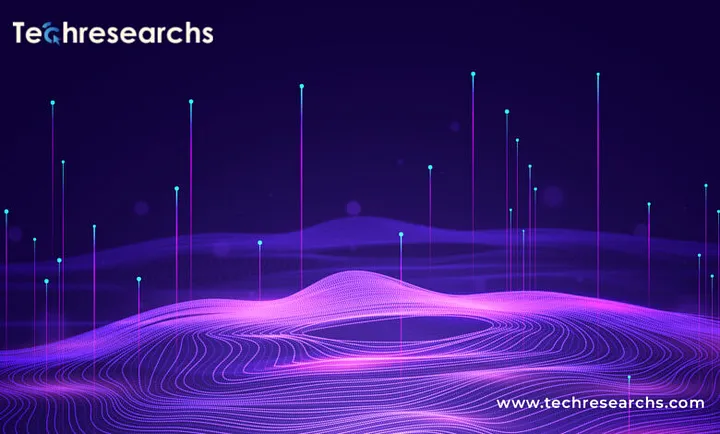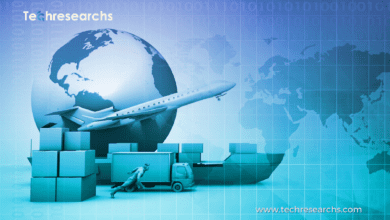Web 3.0 and blockchain: revolutionizing a $6 trillion market


The blockchain is expanding swiftly, according to Market Research Future, and it’s not just for cryptocurrencies.
According to Market Research Future, the value of the Web3.0 blockchain technology sector will exceed $6 trillion in 2023, and from 2023 to 2030, Web3.0 will expand at a CAGR of 44.6%.
Many mistakenly think that Web3.0’s fate is necessarily tied to the turbulent cryptocurrency market because of how heavily it depends on the blockchain. The new sector, though, includes more than just cryptocurrencies. Decision-makers shouldn’t assume that the value of Web3.0 technology is impacted because cryptocurrencies fell in the first half of 2022, according to Gartner. The research and consulting business predicts that the adoption of Web3.0 technology will soon hit a tipping point, and sectors including food safety and airplane maintenance will tokenize their apps.
What fuels the growth of Web3.0?
The Web3.0 Blockchain Market Analysis Report provides information about the commercial, technological, and security elements fostering Web3.0 growth. Despite the COVID-19 pandemic’s severe effects on industries like hospitality, travel, aviation, and retail, the IT sector had consistent revenue growth. Users’ needs for 5G technology, augmented and virtual reality, blockchain applications, artificial intelligence, and machine learning have created new market opportunities for IT. Web3.0 is built on top of these technologies.
According to Aarti Dhapte, senior research analyst at Market Research Future, “Blockchain has been a proven technology that has ensured the security of the crypto and NFTs to the next level — today, it is poised to finally revolutionize the future generation of web technologies.” The current traditional processes of the Web3 blockchain will be significantly transformed.
It is projected that Web3.0 blockchain would be used in almost every sector, such banking and finance, retail and e-commerce, entertainment and media healthcare, IT, and the government and energy sectors.
Top executives and decision-makers are drawn to the decentralized Web3.0’s highly transparent features, where all transactions are recorded, registered, and immediately traceable. On the other hand, developers and IT teams invest in Web3.0 because of its advantages and rapidly developing technology.
The blockchain’s advantages are alluring.Because it is so easy to use, so cheap, and so much faster than traditional centralized operations, it improves client adoption. The cybersecurity sector hails decentralized networks as being safer because it takes multiple concerted attacks to undermine a blockchain operation. The integration of block chain technology with IoT for logistic, supply chains, and manufacturing line operations is attracting the attention of the industrial sector.
Web 3.0 enables data sharing, cryptocurrency-based payments, and straightforward ownership transfers, the report claims.
Binance, Polkadot (Web3 Foundation), Helium Systems Inc., Decentraland, Alchemy Insights, and Antier Solutions are among the leading businesses advancing Web3.0.
The banking, financial services, and insurance industries are some of the major proponents of Web3.0 blockchain technology. Web3.0 is entering a new era as a result of the weight of the world economy because it is predicted that the new technology will completely transform the old financial institutions.
Decentralized finance will have a far bigger impact than it does right now, according to Chapter.
The particular features of a decentralized network will also improve security. For instance, the insurance sector will see a decline in fraud as processes become safer and more error-free, and insurance customers will anticipate cheaper premium costs. Other digital financial industries will also experience similar advantages. Governments are also thinking about using blockchain for land record keeping, military and defense applications, election digital voting systems, and supply chains.
User-centered: What is blockchain technology in Web 3.0?
Web3.0 means decentralized governance and data ownership. Web1.0, the original version of the internet, was created entirely from material created by corporations, organizations, and governments. This web was first mostly information-focused before steadily transitioning to a market-driven environment. The vast majority of visitors to this website weren’t content contributors.
Using social networks, blogs, and websites, users were transformed into creators by Web 2.0, according to Forbes. They did, though, rely on centralized internet services, the majority of which are controlled by huge tech companies. Ads became the main source of cash for web tech businesses, and content creation became a company that needed to create an audience.
According to Chapter, one of the appealing features of Web3 is that instead of using services provided by organizations like Google, Apple, or Facebook to access the internet, users own and control certain portions of the network themselves. As opposed to data, content, or artwork stored on the old internet, Web3.0 data, information, or artwork that has been validated using the blockchain has a creator, an owner, and a value.
According to Forbes, centralized tech companies will be replaced by decentralized infrastructure and application platforms, and people will be able to legally control their data.
Users have always connected online, and billions are predicted to actively use Web3.0 technology on decentralized social media sites.
According to Chapter, in a decentralized social media alternative, content creators would have more control over their online personas and would also be paid for the activity and value they contribute to the network.
diverse blockchain applications across various industries:
The retail and e-commerce sectors are predicted to be the main final adopters of this new technology. They will benefit from risk-free transactions, brand-new services and applications, and cutting-edge buying and selling techniques. The blockchain is being promoted as a remedy for privacy issues, which are a major trend among consumers worldwide who no longer want to provide their personal information to big companies.
Other companies are making use of the blockchain in a variety of ways. For instance, the healthcare industry is reevaluating how to manage and retain electronic health records.
Data sharing between various healthcare teams and services are now extremely challenging because patient records are housed in sizable, centralized IT systems, according to Chapter.
The security advantages that decentralized networks can offer stand in stark contrast to the risk of putting important patient data on centralized systems, where it only takes one breach-attack for it to be compromised.
Blockchain will enable accurate data sharing between healthcare practitioners, which ultimately means accuracy in diagnosis and an increase in treatment effectiveness, claims Chapter.
Web3.0 blockchain technology has the potential to transform clinical trial data management, boost pharmaceutical industry quality control, and increase supply chain efficiency. Decentralized networks can manage supply chain management, IoT, and other digital systems that function with several endpoints, making them more resilient to disturbance.
Web 3.0 challenges: regulations and energy
A lot of people have criticized the blockchain for using a lot of electricity. It is estimated that each Bitcoin transaction uses 707 kilowatt-hours of electricity. Even while this usage is substantially higher than that of other centralized and digital transactions, the crypto-energy issue has gained international attention.
As a response, initiatives like Bitcoin Green have emerged that employ renewable energy sources and very efficient proof-of-stake consensus. As TechRepublic highlighted in July, they are a part of a campaign to create a blockchain that is feeless, egalitarian, and carbon neutral.
But Chapter cautions that there is more work to be done to overcome this problem.
The reality is that there isn’t enough renewable energy production to support all of the operations, and if miners switch to renewable energy sources, it would put undue stress on non-renewable resources, she said.
Another problem that doesn’t seem to have a quick fix is blockchain regulation. Blockchain is surrounded by a murky, inconsistent, usually unclear, or completely absent legal environment around the world. Should company executives be concerned with regulations?
The chapter asserts that they shouldn’t. According to Chapter, while coins may be prohibited in some nations, blockchain technology is not. Nearly 40 countries, like China, Egypt, Qatar, Kuwait, and Vietnam, have restrictions on using cryptocurrency or outright ban it.
The development of the Web3.0 blockchain market won’t be significantly impacted by this prohibition, according to Chapter, as other significant nations are actively pushing and supporting the future Web3.0 age.
Blockchain technology is still used in China to strengthen their economy even if they have banned cryptocurrencies. According to International Finance, the Asian nation was expediting the introduction of the digital Yuan by 2020 and has approved more than 220 blockchain projects.
Other nations that forbid the use of digital currency will also want to take advantage of Web3’s full potential, says Chapter.
Web3.0 Innovations: What executives should watch for
With 2021 setting a record for Web3.0 development growth, the industry for Web3.0 developers is at an all-time high. According to insiders in the industry, as the Web3 ecosystem matures, demand for Web3 developers will rise.
Bounty programs, frequently sponsored by ethical hackers affiliated with groups like HackerOne, have made significant advancements in cybersecurity and app development.
Online challenges are a great way to locate blockchain engineers who can help with bug tracking and building Web3.0 code by taking part in bounties, in addition to spotting fresh talents and solutions, according to Chapter.
Web3.0 developers are rewarded bitcoin tokens for completing bounties. This is an excellent way for vendors who need to fix issues with their Web 3.0 applications, but don’t have developers on staff or don’t want to commit further resources.
Rapid Web3.0 advancements are happening everywhere, from the widespread use of NFTs and cryptocurrencies to the expansion of decentralized autonomous organizations and blockchain-based storage and infrastructure.
Leaders, decision-makers, and IT executives should think about subjects like the metaverse, the decentralized app market, artificial intelligence, video games, and machine learning, according to the research. These technologies will speed up the creation of Web3.0.



